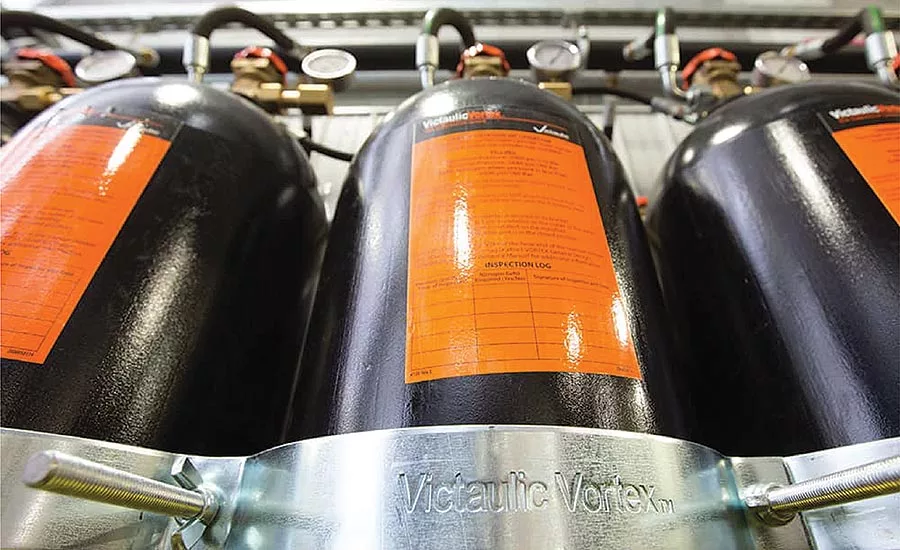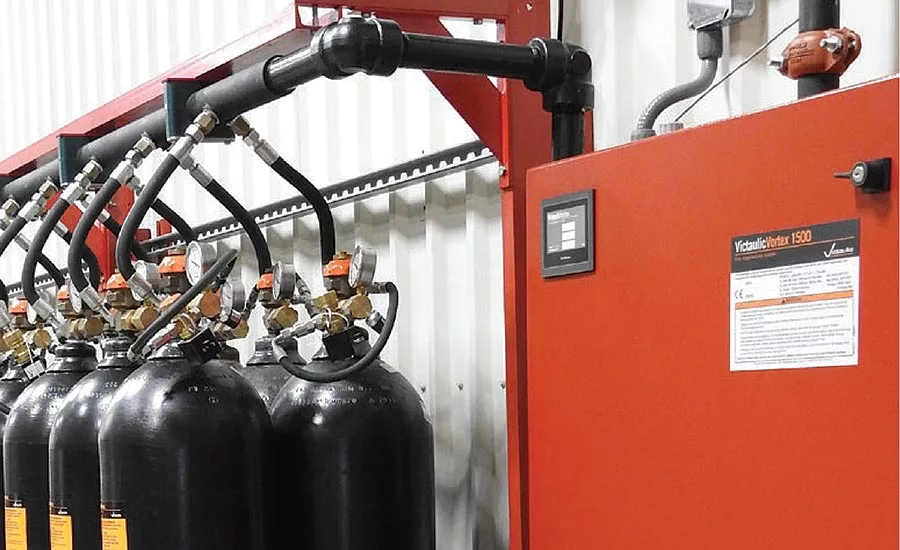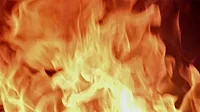The changing landscape of fire protection
NFPA 770 is the first standard on hybrid fire extinguishing systems.


The world is changing quickly, and transformative technologies are introducing new requirements for safety. For example, companies that are capitalizing on advanced computing hardware and expanding the use of unstaffed facilities have recognized the need for fire safety systems that can be deployed in these areas. Forward-looking fire protection system providers have been tracking these trends and examining the shortcomings of existing fire protection systems to find ways to improve performance. Research and development efforts have given rise to advanced systems that can better meet evolving needs.
Recently introduced hybrid fire protection systems have the power to improve worker safety and reduce damage to physical assets by presenting a new way of addressing risk that changes the way companies manage fire safety. As is often the case, this new technology has created the need to evaluate existing codes and standards that were developed for traditional systems and ensure new systems are designed, installed and maintained correctly.
NFPA 770 has been created as a direct result of that need. This standard, developed specifically for the design, installation, testing and maintenance of hybrid fire protection systems, will enable advanced fire protection systems to be installed safely in a range of applications.
NFPA 770, the standard for Hybrid (Water and Inert Gas) Fire Extinguishing Systems, was developed to provide a simple process and straightforward guidance for companies that are purchasing, designing, installing, testing, inspecting and maintaining hybrid fire-extinguishing systems. The first of its kind, NFPA 770 provides guidelines and requirements to ensure that the installed hybrid fire extinguishing system will function as intended throughout its service life. The standard delineates minimum requirements for systems that use a combination of atomized water and inert gas to extinguish fires.
Advancing Technology
Because hybrid fire extinguishing systems are fairly new, they are still considered “emerging technology” within the fire protection industry. These systems, which employ nitrogen or other inert gas combined with potable or de-ionized water, represent a step-change in fire safety. They are appropriate for Class A, Class B and Class C fires, and can be deployed in special hazard applications, such as machinery spaces, combustion turbines, power generation, data centers and wet benches for the semiconductor industry.
Hybrid fire extinguishing systems use water and inert gas. The distribution of hybrid media increases the ability of the system to rapidly extinguish even large fires with a single gallon of water per emitter, per minute at full capacity. Systems may be designed to work within enclosures as a total flooding system or may be installed in open areas protecting specific hazards in a local application.
The hybrid media can be discharged as soon as smoke or fire is detected, unlike CO2 systems, which require personnel to be evacuated before system discharge. This means fires can be addressed more swiftly. More importantly, it assures that workers exposed to the cloud are not adversely affected. There is almost no surface wetting because of the way the water and CO2 are dispersed, so little cleanup is required.
Since the system causes little to no wetting of the affected area, it makes it appropriate for a range of applications and is particularly advantageous in areas where an electrically non-conductive medium is necessary, where cleanup of residual chemicals would present difficulties, and in areas that have to be free of toxins to accommodate workers. The system is suitable for archives, libraries, museums, vaults, uninterruptible power supply (UPS) systems, cable ducts and false floors, globe boxes and other similar processing equipment, in storerooms where flammable liquids are housed, in rooms for technical equipment and machinery, including turbines and combustion, steam, and hydroelectric equipment, for closed transformers and generators, pickling lines and other processes that use nonmetallic tanks.
Standard development processes
The process of creating NFPA 770 began in 2013 when Victaulic requested that a hybrid standard be developed because the two existing standards — NFPA 750, which regulates mist systems, and NFPA 2001, which regulates systems that use clean agents — do not completely address the application of a hybrid fire safety system.
The NFPA research foundation initiated a literature review to determine if there was a need for a hybrid fire suppression system standard and to decide where within the NFPA documents these systems would be best addressed. Hybrid systems were commercially available at this point — developed by Siemens, Tyco and Victaulic — so it was not surprising that the “Literature Review on Hybrid Fire Suppression Systems,” published in 2014, acknowledged that new guidance was required.
Once the NFPA published the decision that a new code was needed, the organization set up a volunteer committee that included experts from manufacturers and companies using hybrid fire protection systems, as well as members with special expertise in the fire suppression industry.
The committee completed the first draft of the code in 2015, and submitted it to the NFPA as the initial step in the review and approval process. The draft was open to the public so input could be gathered to guide additions and changes. The committee addressed the comments, made their changes to the draft, and released an updated version of the code for the second round of public comments. This draft was met with approval, going into effect April 15, with the standard published in August 2020.
Making the future possible
Hybrid fire extinguishing systems are being used more frequently today, and as these systems are augmented and improved, they will no doubt find their way into an even broader range of applications. NFPA 770 establishes a guideline allowing hybrid systems to be used with confidence as new applications are identified. It constitutes an important update to the NFPA codes and standards, paving the way for the safe proliferation of advanced fire safety system technology.
Looking for a reprint of this article?
From high-res PDFs to custom plaques, order your copy today!






